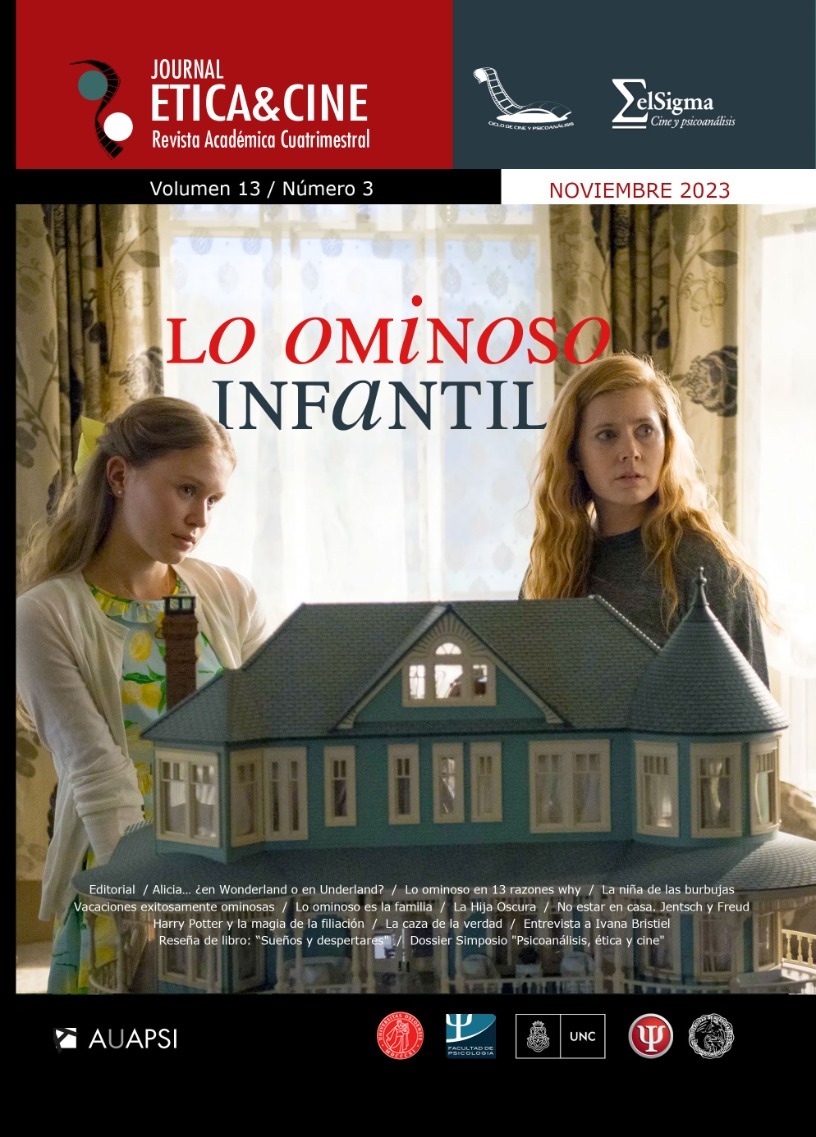Not being at home. Jentsch and Freud, on the uncanny in the artificial world
DOI:
https://doi.org/10.31056/2250.5415.v13.n3.43865Keywords:
Unheimlich, Jentsch, Freud, Automata, ArtefactsAbstract
In this article we are interested in analysing the counterpoint between Ernst Jentsch and Sigmund Freud around the concept of the unheimlich. We are interested in exploring the concept of unheimlich, not in itself, nor in its relevance as a theoretical concept for psychoanalysis, but as the effect of an encounter with expressive artificial beings, something that both Jentsch and Freud discuss. Our long-term aim is to use this debate as an input to address the link between humans and increasingly widespread robotic entities, within the framework of a "psychology of technicity". With this in mind, we are interested in cutting out, emphasising and analysing what these two authors refer to as the psychic relationship that humans establish with artefacts when they acquire human forms, functions or expressions. Finally, we propose to establish a comparison between a scientistic and cognitivist version of the human-artefact link (Jentsch’s) and a mythological and psychoanalytical view (Freud’s), with the aim of extrapolating this tension to contemporary phenomena in an informational cyberanimist scenario.
References
Cameron, J. (1984). (Director). The Terminator [Película]. Paramount Pictures.
Dautenhahn, K. (2007). “Socially Intelligent Robots: Dimensions of Human-Robot Interaction” en Philosophical Transactions: Biological Sciences. 362 (1480), 679-704.
Davis, E. (2023) Tecgnosis. Mito, magia y misticismo en la era de la información. Caja Negra.
Fisher, M. (2018) Lo Raro Y Lo Espeluznante. Barcelona: Alpha Decay.
Freud, S. (1992) Freud. Obras Completas. Tomo XVII. Amorrortu.
Jentsch, E. (2008), On the Psychology of the Uncanny (1906). En J. Collins, & J. Jervis (Eds.), Uncanny Modernity: Cultural Theories, Modern Anxieties (pp. 216-228).
Jonze, S. (2013). (Director). Her [Película]. Annapurna Pictures.
Garland, A. (2015). (Director). Ex Machina. [Película]. DNA Films, Film4, Scott Rudin Productions.
Gutiérrez Aguilar, R. . (2021). Más allá del Uncanny Valley. Forma de lo humano, mímesis y expresión. En Bajo Palabra, (28), 176-197.
Kubrik, S. (1968). (Director). 2001 A Space Odyssey. [Película]. Metro-Goldwyn-Mayer.
Macy, R., & Schrader, V. (2008). Pediophobia: A new challenge facing nursing faculty in clinical teaching by simulation. En Clinical Simulation in Nursing, 4, e89–e91.
Marx, K. 2011, Elementos fundamentales para la crítica de la economía política: borrador 1857-1858, Vol. 2, SigloXXI.
Mori, M., (2012). The Uncanny Valley. En IEEE Robotics & Automation Magazine, 19 (2), 98-100.
Sandrone, D. (2021) Westworld y la pregunta por lo real. En Juan Pablo Duarte (comp) Spoilers del Presente. Ver series para ser de nuestra época. Córdoba.
Scott, R. (1882). (Director). Blade Runner. [Película]. The Ladd Company, Blade Runner Partnership.
Simondon G.. (2017). Psicología de la tecnicidad. En Sobre La Técnica, 35-130. Editorial Cactus.
Simondon G.. (2018). Filosofía y Cibernética. En Sobre La Filosofía. Editorial Cactus, 37-68.
Simondon, G. 2007. El modo de existencia de los objetos técnicos. Prometeo.
Wachowski, L. y Wachowski, L. (1991). (Directoras). The Matrix. [Película]. Village Roadshow Pictures, Silver Pictures
Wang S Lilienfeld SO Rochat P. (2015). The uncanny valley: existence and explanations. En Review of general psychology.
Downloads
Published
Issue
Section
License
Copyright (c) 2023 Ética y Cine Journal

This work is licensed under a Creative Commons Attribution-ShareAlike 4.0 International License.
Los autores que publiquen en Ética y Cine Journal aceptan las siguientes condiciones:
Los autores/as conservan los derechos de autor © y permiten la publicación a Ética y Cine Journal, bajo licencia CC BY-SA / Reconocimiento - Reconocimiento-CompartirIgual 4.0 Internacional. La adopción de esta licencia permite copiar, redistribuir, comunicar públicamente la obra, reconociendo los créditos de la misma, y construir sobre el material publicado, debiendo otorgar el crédito apropiado a través de un enlace a la licencia e indicando si se realizaron cambios.

Este obra está bajo una licencia de Creative Commons Reconocimiento-CompartirIgual 4.0 Internacional.




